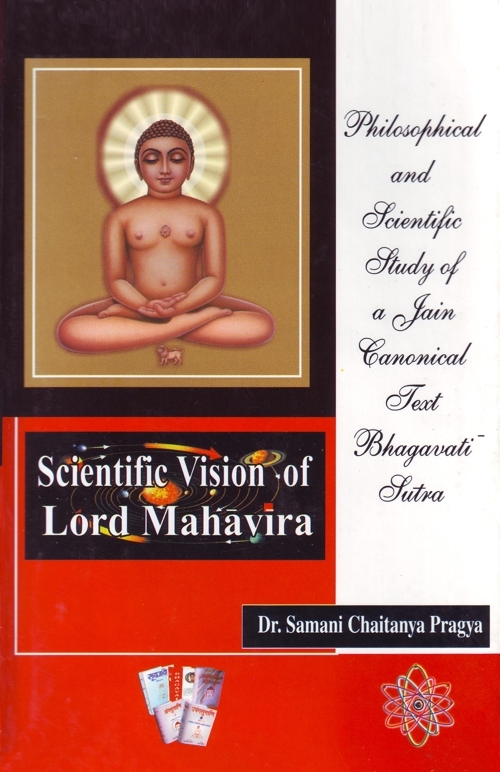In the Bh.S we find two words for Time—Addhāsamaya and Kāla.[77] Etymologically the term 'addhā' denotes distance (or length) of time as well as that of space,[78] while 'samaya' signifies a point of time (moment);[79] kāla is the substantial cause of samaya.[80] From the study of the Bh.S it becomes clear that Addhāsamaya can be defined as an instantaneous, eternal, fundamental, formless, non-living, independent substance.[81] Kāla can be understood as an entity of atomic structure.[82] The shvetambara scripture[83] often identifies time with the modification of sentient and non-sentient entities as we see in answering to many questions, such as, the question of the beginning and ending of the universe etc. Sthānāṅga sūtra[84] endorses the same view. On the other hand, in the same text time has been mentioned as a substance. In the twenty fifth chapter (śataka), it has been asked—"How many substances are there, O Lord?" Mahāvīra replied: "O Gautama, there are two substances—1. Living and 2. Non-living. The five are non-living, such as, the medium of motion, the medium of rest, space, soul, and the unit of time.''[85] Here, time is regarded as a substance. Time is, thus, considered both a mode as well as a substance.
In the canons like Anuyogadvāra and Uttarādhyayana,[86] time is defined as momentary or continuum. Tattvārtha Sūtra[87] defines time as the substance which is recognized from the phenomena of becoming, change, motion, before and after.
The commentary on Tattvārthaa Sūtra[88] proves the existence of time as an independent substance by arguing that time satisfies the definition of an existent. This is because it has modes and qualities. Its modes are origination, cessation and persistence; the present ends and begins again at every moment, and persists through the process. The common qualities of time are non-sentience and the absence of material qualities. Its unique qualities are its functions such as becoming, change, motion, and the sequence of before and after.
Thus, time possesses the characteristic of persistence through change and therefore, is a substance. It is the necessary condition of duration, modification, motion, newness and oldness of the objects. Time by itself cannot cause an object to exist, but at the same time it can not be conceived without time, because change implies temporal succession of something in which modification takes place. Similarly, motion implies different positions of an object in space in temporal succession. Besides, time causes the distinction between the old and the new, the former and the latter.
 Dr. Samani Chaitanya Pragya
Dr. Samani Chaitanya Pragya

